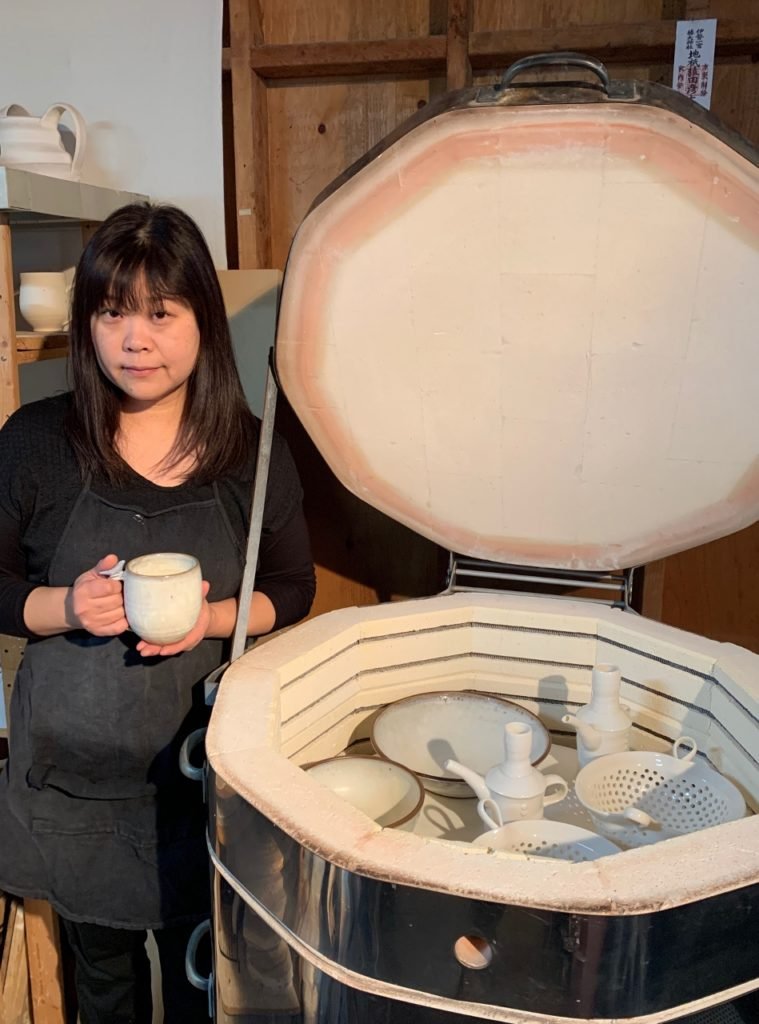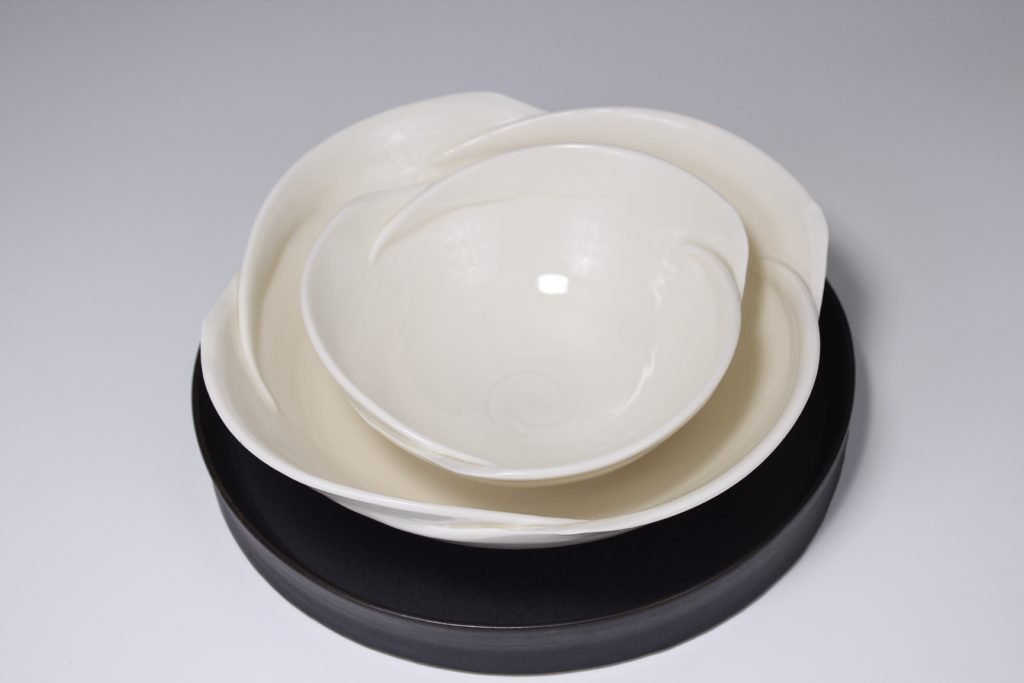The Craft Council of BC is joining the #5WomenArtists movement, started by the National Museum of Women in the Arts, once more in March. This campaign calls attention to the fact that women have not been treated equally in the art world, and today they remain dramatically underrepresented and undervalued in museums, galleries, and auction houses.
We are featuring some of the talented women in craft – follow us on Instagram where these artists will be taking over to share a glimpse of their practice, and everyday activities. Can you name 5 women artists?

Atsuko Yoshimura grew up in Japan and immigrated to Canada in 1996. She studied ceramics extensively in Japan and Canada. Upon arrival in Vancouver, she enrolled in the Fine Arts program at Langara College. Then she transferred to Emily Carr University of Art and Design and received a BFA in 2006. On top of her studies, she worked as a glaze technician at a pottery studio, and she also produced ceramic work for galleries and craft shows around Vancouver. In 2008, she took a hiatus from pottery making and focused on raising her children. Once her second son entered elementary school in 2014, she made a fresh start with a new body of work, porcelain series. Atsuko currently works as a full-time ceramic artist.
“Although it is still common in the Japanese culture to think that inheriting traditional skills is a man’s role, I anticipate that men and women will be able to freely select their professions regardless of gender stereotypes.“
Have you ever wondered how women can effect change by sharing their art with the world? I am a ceramic artist and create porcelain and stoneware utilitarian ceramics. I grew up in Japan, where pottery is prominent in the culture, and immigrated to Canada in 1996. I have learned pottery extensively in Japan and Canada. Today, many women ceramic artists are active and creating outstanding work all through the world.


When I started learning pottery in 1994 in Japan, there were not as many women ceramic artists compared to now. Historically, women were excluded from a male-dominated field of ceramic arts for centuries, restricted from taking apprenticeships or leaning in professional schools. This was due to the fact that many tasks require considerable power, such as wedging clay, wheel throwing, kiln loading and firing. Also, it was generally considered that women would do housework and men would work. However, this situation was changed during the postwar period; women have been able to take professional training, and the status of female potters was greatly improved. In recent years, women ceramic artists became more abundant and their work fascinates people around the world. Although it is still common in the Japanese culture to think that inheriting traditional skills is a man’s role, I anticipate that men and women will be able to freely select their professions regardless of gender stereotypes.
After immigrating to Canada, I enrolled in a fine arts program in college and university. I was impressed by the fact that a lot of women artists were quite active in the field of ceramic art. Their work has a great diversity in style from utilitarian pottery to conceptual sculpture. When I was learning pottery in Japan, I focused on improving my throwing skills, but after moving to Canada, I realized that learning pottery was not only about developing skills and techniques, but also about expressing yourself creatively.
Now I work as a full-time ceramic artist creating functional pottery from my home studio while raising children. I sometimes have a hard time to balance work with home life, but I believe that all the experience influences my artwork. I enjoy not only making pottery but also using it for cooking, food preparation and serving in my daily life. I strive to make functional pottery meant to be both aesthetically and functionally pleasing to the hand and to the eye.
Maybe utilitarian pottery is not such an art which conveys a direct message, but each piece of pottery embodies the artist’s experiences. I believe that women artists can share their passion and aesthetic gratification with the users through their work and bring beauty and enjoyment into our everyday lives. This effort may be a small step, but I think that women’s art can raise awareness about gender equality issues and this awareness can create change in the world.
Atsuko Yoshimura | Atsuko Yoshimura Ceramics

